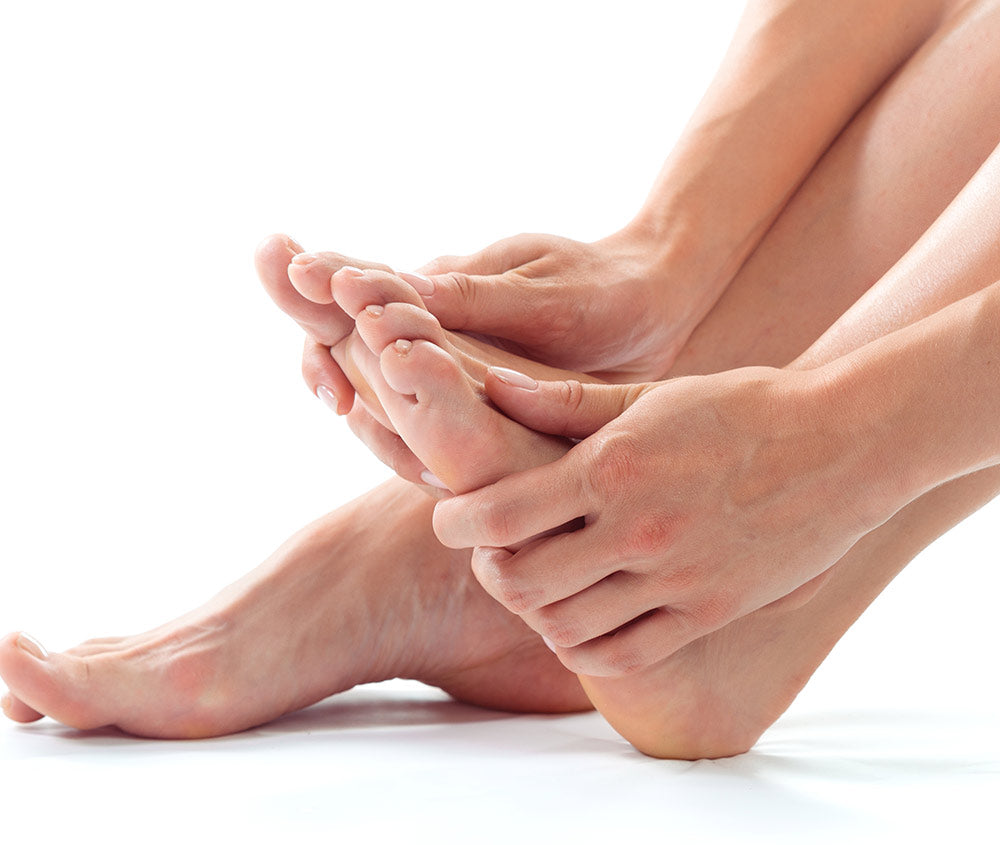It’s more common than you might think.
The thing about talking about health, of the nail variety and otherwise, is that sometimes we have to discuss matters that might not be our favorites. But they’re important and we should discuss them without shame or embarrassment.
That’s very true when it comes to onychomycosis, which is more commonly known as nail fungus. As a board-certified dermatologist, Dr. Dana Stern knows that treating nail fungus is a huge concern for her patients and always a hot topic of conversation among professional nail technicians because they are often the ones on the front line.
Nail fungus is actually one of the most commonly treated nail issues in this country, making up half of all nail disorders. 35 million people in the US are affected and the prevalence is especially high amongst the elderly and diabetic populations. Interestingly only 6.3 million people are actually diagnosed and of those, only 2.5 million end up being treated. We hope to see that change. Another issue is that onychomycosis is also very commonly misdiagnosed. In fact, only 50% of abnormal, thick, discolored toenails are due to fungus! This is why it is important to have an accurate diagnosis and a clear understanding of when it is appropriate to seek medical attention.
The medical term “onychomycosis” refers to fungal nail infections. Nail fungus can be caused by dermatophytes such as Trichophyton rubrum (the leading cause of nail fungus in the U.S.), yeast, or non-dermatophyte molds.
Who is susceptible to fungal nail infections?
Why is it that some people get nail fungus and others seem immune when we are, in reality, all exposed? There are many factors that play into whether you are susceptible to a fungal nail infection. The most common risk factors include: increasing age, diabetes, suppressed immunity, excessive sweating (hyperhidrosis), poor circulation. and nail dystrophy (irregular growing nails). In addition, we believe that there is genetic susceptibility as well. Nail fungus can also be acquired from fungal infections at other areas of the body. For example, athlete’s foot (tinea pedis) can spread, causing toenail fungus. This is especially true if the nail is damaged or lifted. Most toenail fungus begins in the skin near the nail, as opposed to the actual hard nail. Athlete’s foot is essentially a fungal reservoir that has the potential to take up residence in the nail.
What does a fungal infection look like?
Although the appearance of nail fungus can vary, generally the nail appears yellow, brown, or white, thickened, and crumbly. There is often significant debris under the nail and the surrounding nail folds and cuticle area can be redder than normal.
Should I worry about my fungal nail infection?
Fungal infections of the nail can be challenging to treat. They are quite persistent and even when effectively treated, they can have high recurrence rates and not everyone responds to a single treatment. This may make you wonder if it’s even worth it to treat them and the answer is a resounding YES and here’s why.
Nail fungus can spread to other areas of the body such as the hands, legs, and back. In addition, those who take medications that weaken the immune system—like steroids or chemotherapy—are particularly susceptible. While most healthy adults who ignore nail fungus will probably not have any immediate issues, over time, fungal infection can cause the nails to become thickened, brittle, discolored and even painful. Additionally, the longer one waits to treat nail fungus, the harder it becomes to treat it.
And don’t forget that nail fungus can be contagious. In a nail salon setting, a client with fungus can spread it to other clients if proper disinfection precautions are not followed. This becomes especially relevant when porous materials such as files and toe separators are reused. Proper disinfection between clients is also especially relevant for pedicure foot baths, so make sure your salon is making the space safe for you.
While a proper diagnosis is key, it can be tricky, even for medical professionals. The nail needs to be tested either by looking for hyphae under a microscope or by being sent to a lab for special staining or even newer techniques such as PCR (Polymerase chain reaction) where the DNA of the organism can be identified.
Is there a treatment for fingernail or toenail fungus?
As far as treatments go, there is typically a choice between topical or oral options. Oral agents, like Terbinafine, tend to have more potential side effects even though these drugs have been on the market for a long time and are generally well tolerated and safe when used with the appropriate patient. We now have some newer topical FDA-approved antifungal therapy prescriptions including Efinaconazole and Tavaborole. Both of these options are more effective than over-the-counter and naturopathic methods and are generally safe with very minimal side effects.
If you search for a treatment for toenail fungus online, you will come across a ton of natural and alternative approaches. Typically, Dr. Dana recommends conventional FDA-approved therapies, as we have more studies and data for these treatments. However, we can’t ignore the costs of topical antifungal prescriptions which can be cost prohibitive and oftentimes are not covered by insurance. So alternative approaches can be a better option than no treatment at all. If you do decide to go the natural or alternative treatment route, see a dermatologist if the treatment is not working after four months for toenails and two months for fingernails.



